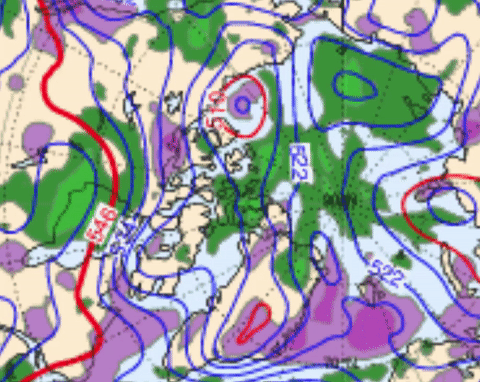December 19 2016 NOAA HRPT (darker), December 18 1987 USSR Meteor IR. Huge differences starting with surface temperatures, a good +10 C warmer in 2016, plus numerous features of wider open water.
GONE: #1 Famous ice bridge between Canada and Greenland, a documented
historical location used by Inuit dog teams likely for Centuries Part of an ancient migrating route going back millennia #2 almost completely frozen Nares Srait.
#3 NE Ellesmere NW Greenland steady ice sheet, virtually always surviving the summer.
#4 The Big Lead, a phenomena requiring very consolidated sea ice, strongly frozen together mainly by very thick sea ice. #5 Tidal leads., closely linked to tidal waves during greater tidal height variations. They froze easily and disappeared quickly by drifting snow. #6 Ice next to Spitsbergen,
a mere small portion of the huge habitat dwelled by Polar Bears . #7 Smith Sound Polynya narrowing, a very important wildlife zone for Belugas, Narwhals, some sea birds and Bowhead whales. Vaster ice span gradually push wildlife to a narrow area always open despite coldest weather possible. Lately many whales get trapped by later refreeze of sea ice.
NEW: #1 Beaufort sea open very late in Darkness. #2 very open Smith Sound, #3 Thin sea ice leads radically not symmetric to tidal waves #4 Big lead not showing at all. #5 narrow Straits much more open along with very thin ice very dangerous to walk on.
A strict numerical sea ice extent interpretation may suggest less change between the pictures presented separated by 30 years, but there is much more than enunciated above, the biggest one is clouds, looking carefully at 1987, we see clouds barely surviving the very cold dryer environment. These clouds lazily hung out with very little injection of moisture from the Northern oceans. Winter was really set, called "mid-winter" for a reason. WD December 19, 2016





























